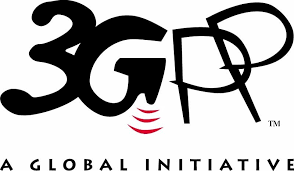Available Standards (3315)
Showing standards 601 - 800
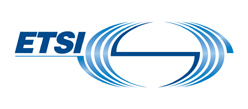
End-to-End Security and Group Authentication
The present document provides options and analyses for the security features and mechanisms providing end-to-end security and group authentication for oneM2M.
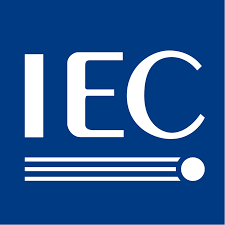
Energy efficiency through automation systems
IEC/TR 62837:2013(E) provides to the technical committees a framework for the development and adaptation of documents in order to improve energy efficiency in manufacturing, process control and ind

Energy Efficient IP Video Surveillance Systems over Coaxial Cables
The present document describes the motivations for the standardization of technology which enables Energy Efficient IP Video Surveillance Systems over new and legacy Coaxial Infrastructures.

Energy Efficient IP Video Surveillance Systems over Coaxial Cables; Energy Efficient IP Video Surveillance Systems over Coaxial Cables
The present document describes the motivations for the standardization of technology which enables Energy Efficient IP Video Surveillance Systems over new and legacy Coaxial Infrastructures.

Energy Grid Ontology
The Energy Grid ontology
describes power stations, substations, energy resources, and
customers.

Engineering data exchange format for use in industrial automation systems engineering - Automation Markup Language - Part 1: Architecture and general requirements
IEC 62714-1:2018 is a solution for data exchange focusing on the domain of automation engineering.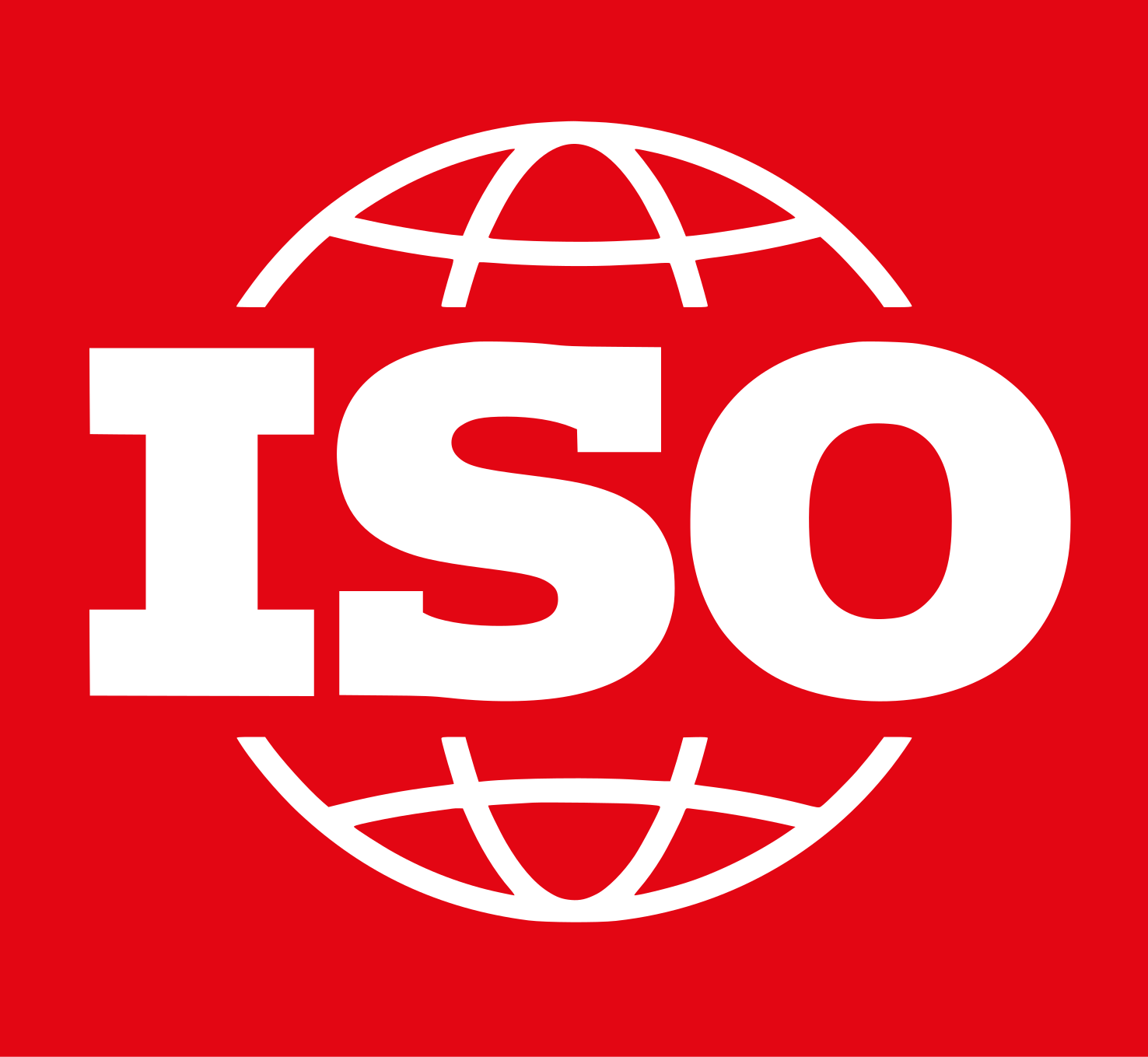
Enterprise integration — Framework for enterprise modelling
ISO 19439:2006 specifies a framework conforming to requirements of ISO 15704, which serves as a common basis to identify and coordinate standards development for modelling of enterprises, emphasising,
Enterprise modelling and architecture - Requirements for enterprise-referencing architectures and methodologies
This document specifies a reference base of concepts and principles for enterprise architectures that enable enterprise development, enterprise integration, enterprise interoperability, human under

Enterprise modelling and architecture — Constructs for enterprise modelling
This document identifies and specifies constructs necessary for users that model enterprises in conformance with ISO 19439.This document focuses on, but is not restricted to, engineering and the integ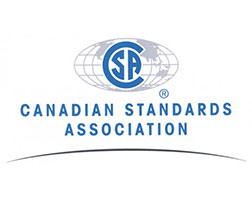
Enterprise Resource Planning
The Enterprise Resource Planning (ERP) WG seeks to develop best practices to enable organizations that run their business on large ERP implementations, such as SAP or Oracle applications, to secure

Environment Ontology (ENVO)
ENVO is an ontology which represents knowledge about environments,environmental processes, ecosystems, habitats, and related entities

Environmental Engineering (EE); Assessment of mobile network energy efficiency
Define the topology and level of analysis to assess the energy efficiency of mobile network (scope that could include radio base stations, backhauling systems, radio controllers, other infrastructu

Environmental Engineering (EE); Best practice to assess energy performance of future Radio Access Network (RAN) deployment
Many companies are running studies on estimating energy performance of future radio access networks (RAN) deployment.

Environmental Engineering (EE); Measurement method for energy efficiency of Network Functions Virtualisation (NFV) in laboratory environment
Establish a new energy efficiency measurement methods and metrics to support NFV scenarios, such as IMS and EPC, to define measurement methods for: 1) VNF, 2)Server, 3) NFVI(NFV Infrastrucutre) inc

Environmental Engineering (EE); Measurement method for power consumption and energy efficiency of wireless access network equipment
Enhancing the energy efficiency measurement method for RBS

Environmental Engineering (EE); Mobile Network (MN) Energy Consumption (EC) estimation method; Energy estimation method based on statistical approach
Providing an estimation method for estimating the total energy consumption of a Mobile Network based on using small portion of data from same Network and statistically approach.

Environmental Engineering (EE); Standardization terms and trends in energy efficiency
The aim is develop a framework standard that will take into consideration all general aspects, terms and main trends towards energy efficiency/management, including but not limited to:

Environmental Engineering (EE); Study on methods and metrics to evaluate energy efficiency for future 5G systems
This TR is an initial study about metrics and methods of measurements for the energy efficiency of 5G products and networks.

Environmental Engineering (EE); Sustainable power feeding solutions for 5G network
The present document defines power feeding solutions for 5G, converged wireless and wireline access equipment and network, taking into consideration their enhanced requirements on service availability and reliability, the new deployment scenarios, together with the environmental impact of the proposed solutions. The minimum requirements of different solutions including power feeding structures, components, backup, safety requirements, environmental conditions are also defined. The present document is applicable to powering of both mobile and fixed access network elements, in particular on equipment that have similar configurations and needs.
Environmental Engineering (EE); Testing methodology for equipment able of dynamic performances adaptation
Energy Aware Networking adapt performances and power consumption according to traffic load.

Environmental labels and declarations - Self-declared environmental claims (Type II environmental labelling)
This International Standard specifies requirements for self-declared environmental claims, including statements, symbols and graphics, regarding products.

Environmental management - Life cycle assessment - Data documentation format
This document specifies those terms, concepts and principles considered necessary to address stakeholder concerns and to carry out enterprise creation programmes as well as any incremental change p

Environmental management - Life cycle assessment - Requirements and guidelines (ISO 14044:2006 + Amd 1:2017 + Amd 2:2020); German version EN ISO 14044:2006 + A1:2018 + A2:2020
This document specifies requirements and provides guidelines for life cycle assessment. It coves life cycle assessment studies and life cycle inventory studies.

Environmental management for concrete and concrete structures - Part 8: Environmental labels and declarations
This document provides a general principle, procedures and requirements for environmental labels and declarations for concrete and concrete structures.

Environmental testing - Part 2-1: Tests - Test A: Cold
IEC 60068-2-1:2007 Deals with cold tests applicable to both non heat-dissipating and heat-dissipating specimens.
Environmental testing - Part 2-27: Tests - Test Ea and guidance: Shock
Environmental testing - Part 2-27: Tests - Test Ea and guidance: Shock
Environmental testing - Part 2-2: Tests - Test B: Dry heat
IEC 60068-2-2:2007 Deals with dry heat tests applicable both to heat-dissipating and non heat-dissipating specimens.
Environmental testing - Part 2-64: Tests - Test Fh: Vibration, broadband random and guidance
IEC 60068-2-64:2008+A1:2019 demonstrates the adequacy of specimens to resist dynamic loads without unacceptable degradation of its functional and/or structural integrity when subjected to the specifie
EPC Information Services (EPCIS) Specification Conformance Requirements
A technical standard on how to share traceability event data

ERC: Lightweight Identity #1056
A protocol that in the DPP case is used to anchor DIDs and product information schemas.
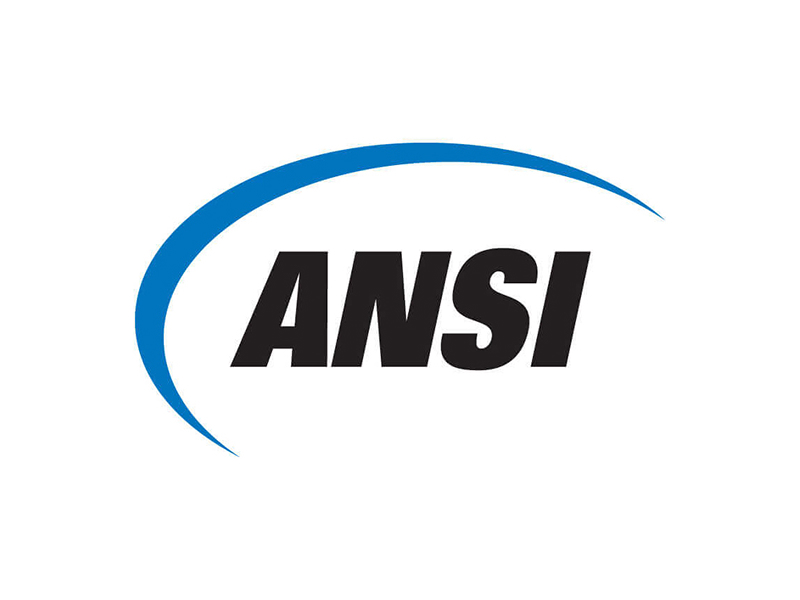
Ergonomic Guidelines for the Design, Installation And Use of Machine Tools
This document provides ergonomic design guidelines intended to improve quality, performance and safety by reducing fatigue and injury associated with manufacturing systems, including individual and in
Ergonomics of human-system interaction - Part 125: Guidance on visual presentation of information
ISO 9241-125:2017 provides guidance for the visual presentation of information controlled by software, irrespective of the device.
Ergonomics of human-system interaction - Part 161: Guidance on visual user-interface elements
ISO 9241-161:2016 describes visual user-interface elements presented by software and provides requirements and recommendations on when and how to use them.
Ergonomics of human-system interaction - Part 380: Survey result of HMD (Head-Mounted Displays) characteristics related to human-system interaction
This document provides information based on a study of the characteristics of head-mounted displays (HMDs) regarding the ergonomics of human-system interaction.
Ergonomics of human-system interaction - Part 393: Structured literature review of visually induced motion sickness during watching electronic images
This document gives the scientific summaries of visually induced motion sickness resulting from images presented visually on or by electronic display devices.
Ergonomics of human-system interaction - Part 394: Ergonomic requirements for reducing undesirable biomedical effects of visually induced motion sickness during watching electronic images
This document establishes the requirements and recommendations for image contents and electronic display systems to reduce visually induced motion sickness (VIMS), while viewing images on electronic d
Ergonomics of human-system interaction - Part 430: Recommendations for the design of non-touch gestural input for the reduction of biomechanical stress
This document provides guidance on the design, selection and optimization of non-contacting hand and arm gestures for human-computer interaction.
Ergonomics of human-system interaction - Part 940: Evaluation of tactile and haptic interactions
This document - describes the types of methods that can be used for the evaluation of haptic devices and of systems that include haptic devices, - specifies a procedure for the evaluation of haptic in
Ergonomics of human-system interaction — Part 810: Robotic, intelligent and autonomous systems
This document addresses:— physically embodied RIA systems, such as robots and autonomous vehicles with which users will physically interact.
Ergonomics of human-system interaction - Part 910: Framework for tactile and haptic interaction
ISO 9241-910:2011 provides a framework for understanding and communicating various aspects of tactile/haptic interaction.
Ergonomics of human-system interaction - Part 920: Guidance on tactile and haptic interactions
ISO 9241-920:2009 gives recommendations for tactile and haptic hardware and software interactions.
Ergonomics of the thermal environment — Methods for the assessment of human responses to contact with surfaces — Part 1: Hot surfaces
ISO 15536-1:2006 provides temperature threshold values for burns that occur when human skin is in contact with a hot solid surface.
Ergonomics principles in the design of work systems
ISO 6385:2016 establishes the fundamental principles of ergonomics as basic guidelines for the design of work systems and defines relevant basic terms.
Ethernet and power over cables: Part 2: Ethernet and power over coaxial cables for IP video surveillance:
The present document describes the technology which enables Efficient IP Video Surveillance Systems over new and legacy Coaxial Infrastructures.

ETSI - GR ENI 001 - Experiential Networked Intelligence (ENI) - ENI use cases
GR ENI 001 Experiential Networked Intelligence (ENI); ENI use cases

ETSI - GR ENI 003 - Experiential Networked Intelligence (ENI) - Context-Aware Policy Management Gap Analysis
GR ENI 003 Experiential Networked Intelligence (ENI); Context-Aware Policy Management Gap Analysis

ETSI - GR ENI 004 - Experiential Networked Intelligence
Experiential Networked Intelligence (ENI)- Terminology for Main Concepts in ENI

ETSI - GS ENI 002 - Experiential Networked Intelligence (ENI) - ENI requirements
GS ENI 002 Experiential Networked Intelligence (ENI); ENI requirements

ETSI - GS ENI 006 - Experiential Networked Intelligence (ENI) - Proof of Concepts Framework
Experiential Networked Intelligence (ENI); Proof of Concepts Framework

ETSI - TR 103 514 -ETSI - TR 103 514 V1.1.1 - Study on Physical (PHY) layer
The document aims on studying "DECT-2020: New Radio", a new radio interface based on state of the art paradigms able to offer the required data rates, propagation characteristics and spectrum effic

ETSI - TR 103 515 - Study on URLLC use cases of vertical industries for DECT evolution and DECT-2020
The document presents a study of use cases and vertical scenarios for Ultra-Reliable Low-Latency Communications (URLLC) intended to be used as base requirements for evolving DECT.

ETSI - TR 103 527 V1.1.1 - Virtualized IoT Architectures with Cloud Back-ends
In addition to interoperability and security that are two recognized key enablers to the development of large IoT systems, a new one is emerging as another key condition of success: virtualization.

ETSI - TS 102 939-1 V1.3.1 - Home Automation Network (phase 1)
DECT Ultra Low Energy (ULE) provides bi-directional radio communication with medium range, data protection, and Ultra Low Power consumption between different types of Portable Devices and Radio Fix

ETSI - TS 103 264 V2.1.1 - Reference Ontology and oneM2M Mapping
A standardized framework for the Smart Appliances Reference Ontology based on the results of a European Commission Study Group on Smart Appliances ontologies and of a Specialist Task Force on the m

ETSI GANA as Multi-Layer Artificial Intelligence (AI) Framework for Implementing AI Models for Autonomic Management & Control (AMC) of Networks and Services; and Intent-Based Networking (IBN) via GANA Knowledge Planes (KPs)
Provides insights on ETSI GANA Knowledge Planes (KPs) Driven Networking in Autonomic/Autonomous Networking (ANs) for Networks that exhibit features such as self-* operations such as self-adaptation, s
ETSI GR MEC 017 V1.1.1 (2018-02)Mobile Edge Computing (MEC); Deployment of Mobile Edge Computing in an NFV environment
The document describes solutions that allow the deployment of MEC in an NFV environment.

ETSI GR MEC 018 V1.1.1 (2017-10)Mobile Edge Computing (MEC); End to End Mobility Aspects
The document focuses on mobility support provided by Mobile Edge Computing.

ETSI GR MEC 022 V2.1.1 (2018-09)Multi-access Edge Computing (MEC); Study on MEC Support for V2X Use Cases
The document focuses on identifying the MEC features to support V2X applications.

ETSI GR MEC 024 V2.1.1 (2019-11)Multi-access Edge Computing (MEC); Support for network slicing
The document focuses on identifying the MEC functionalities to support network slicing. It first analyses the relevant network slicing concepts as defined by external organizations.

ETSI GR MEC 027 V2.1.1 (2019-11)Multi-access Edge Computing (MEC); Study on MEC support for alternative virtualization technologies
The document focuses on identifying the additional support that needs to be provided by MEC when MEC applications run on alternative virtualization technologies, such as containers.

ETSI GR MEC 031 V2.1.1 (2020-10)Multi-access Edge Computing (MEC) MEC 5G Integration
The document describes the key issues, solution proposals and recommendations for MEC integration into 3GPP 5G system.

ETSI GR MEC 035 V3.1.1 (2021-06)Multi-access Edge Computing (MEC); Study on Inter-MEC systems and MEC-Cloud systems coordination
The document studies the applicability of MEC specifications to inter-MEC systems and MEC-Cloud systems coordination that supports e.g.

ETSI GR MEC-DEC 025 V2.1.1 (2019-06)Multi-access Edge Computing (MEC); MEC Testing Framework
The document lists the functionalities and capabilities required by a MEC compliant implementation.

ETSI GR QKD 003 V2.1.1
The present document is a preparatory action for the definition of properties of components and internal interfaces of QKD Systems.

ETSI GR QKD 007 V1.1.
The present document collects together definitions and abbreviations used in relation to Quantum Key Distribution (QKD) and ETSI ISG-QKD documents.

ETSI GR QSC 001 V1.1.1
The present document gives an overview of the current understanding and best practice in academia and industry about quantum-safe cryptography (QSC).

ETSI GR QSC 003 V1.1.1
The present document examines a number of real-world uses cases for the deployment of quantum-safe cryptography (QSC).

ETSI GR QSC 004 V1.1.1
The present document presents the results of a simplified threat assessment following the guidelines of ETSI TS 102 165-1 [i.3] for a number of use cases.

ETSI GR QSC 006 V1.1.1
The present document gives information on the long-term suitability of symmetric cryptographic primitives in the face of quantum computing.

ETSI GS CIM 014 V1.1.1 (2021-04)Context Information Management (CIM);NGSI-LD Test Suite
The present document defines the organization or grouping of test cases based on the functionality to be tested (e.g.

ETSI GS MEC 001 V2.1.1 (2019-01)Multi-access Edge Computing (MEC); Terminology
The document provides a glossary of terms relating to the conceptual, architectural and functional elements within the scope of work on Multi-access Edge Computing.

ETSI GS MEC 002 V2.2.1 (2022-01)Multi-access Edge Computing (MEC); Phase 2: Use Cases and Requirements
The document specifies the requirements for Multi-access Edge Computing with the aim of promoting interoperability and deployments. It contains normative and informative parts.

ETSI GS MEC 003 V2.2.1 (2020-12)Multi-access Edge Computing (MEC); Framework and Reference Architecture
The document provides a framework and reference architecture for Multi-access Edge Computing that describes a MEC system that enables MEC applications to run efficiently and seamlessly in a multi-a

ETSI GS MEC 005 V2.1.1 (2019-07)Multi-access Edge Computing (MEC); Proof of Concept Framework
The document defines a framework to be used by ETSI ISG MEC to coordinate and promote multivendor Proofs of Concept (PoC) projects and MEC Deployment Trial (MDT) projects illustrating key aspects o

ETSI GS MEC 009 V3.1.1 (2021-06)Multi-access Edge Computing (MEC); General principles, patterns and common aspects of MEC Service APIs
The document defines design principles for RESTful MEC service APIs, provides guidelines and templates for the documentation of these, and defines patterns of how MEC service APIs use RESTful princ

ETSI GS MEC 010-1 V1.1.1 (2017-10)Mobile Edge Computing (MEC); Mobile Edge Management; Part 1: System, host and platform management
The document defines the management of the mobile edge system, mobile edge hosts and mobile edge platforms.

ETSI GS MEC 010-2 V2.1.1 (2019-11)Multi-access Edge Computing (MEC); MEC Management; Part 2: Application lifecycle, rules and requirements management
The document provides information flows for lifecycle management of applications running on a MEC host, and describes interfaces over the reference points to support application lifecycle managemen

ETSI GS MEC 011 V2.2.1 (2020-12)Multi-access Edge Computing (MEC); Edge Platform Application Enablement
The document focuses on the functionalities enabled via the Mp1 reference point between MEC applications and MEC platform, which allows these applications to interact with the MEC system.

ETSI GS MEC 012 V2.1.1 (2019-12)Multi-access Edge Computing (MEC); Radio Network Information API
The document focuses on the Radio Network Information MEC service. It describes the message flows and the required information.

ETSI GS MEC 013 V2.1.1 (2019-09)Multi-access Edge Computing (MEC); Location API
The document focuses on the MEC Location Service.

ETSI GS MEC 014 V2.1.1 (2021-03)Multi-access Edge Computing (MEC); UE Identity API
The present document focuses on the UE Identity functionality.

ETSI GS MEC 015 V2.1.1 (2020-06)Multi-Access Edge Computing (MEC); Traffic Management APIs
The document focuses on the Traffic Management multi-access edge service.

ETSI GS MEC 016 V2.2.1 (2020-04)Multi-access Edge Computing (MEC); Device application interface
The document contains the API definition for the lifecycle management of user applications over the Mx2 reference point between the device application and the User Application LifeCycle Management

ETSI GS MEC 021 V2.1.1 (2020-01)Multi-access Edge Computing (MEC); Application Mobility Service API
The document provides a specification for end-to-end MEC application mobility support in a multi-access edge system. The document describes information flows, required information and operations.

ETSI GS MEC 026 V2.1.1 (2019-01)Multi-access Edge Computing (MEC); Support for regulatory requirements
The document focuses on the support of regulatory requirements for Lawful Interception (LI) and Retained Data (RD) when implementing MEC into the network.

ETSI GS MEC 028 V2.2.1 (2021-07)Multi-access Edge Computing (MEC); WLAN Access Information API
The document focuses on the WLAN Access Information MEC service. It describes the message flows and the required information. The document also specifies the RESTful API with the data model.

ETSI GS MEC 029 V2.2.1 (2022-01)Multi-access Edge Computing (MEC); Fixed Access Information API
The document describes a MEC service on Fixed Access Information for Fibre (e.g. G-PON, XG-PON, NG-PON2, XGS-PON), Cable (DOCSIS 3.1), xDSL, and Point-to-Point Fibre Ethernet access networks.

ETSI GS MEC 030 V2.1.1 (2020-04)Multi-access Edge Computing (MEC); V2X Information Service API
The document focuses on a MEC Vehicular-to-Everything (V2X) Information Service (VIS), in order to facilitate V2X interoperability in a multi-vendor, multi-network and multi-access environment.

ETSI GS MEC-DEC 032-1 V2.1.1 (2020-12)Multi-access Edge Computing (MEC); API Conformance Test Specification; Part 1: Test Requirements and Implementation Conformance Statement (ICS)
Based on the testing methodology guidelines and framework specified in ETSI GR MEC-DEC 025, the document specifies part 1 of a multi-part deliverable test specification.

ETSI GS MEC-DEC 032-2 V2.1.1 (2020-12)Multi-access Edge Computing (MEC); API Conformance Test Specification; Part 2: Test Purposes (TP)
Based on the testing methodology guidelines and framework specified in ETSI GR MEC-DEC 025, the document specifies part 2 of a multi-part deliverable test specification for the MEC service APIs (cu

ETSI GS MEC-DEC 032-3 V2.1.1 (2020-12)Multi-access Edge Computing (MEC); API Conformance Test Specification; Part 3: Abstract Test Suite (ATS)
Based on the testing methodology guidelines and framework specified in ETSI GR MEC-DEC 025, the document specifies part 3 of a multi-part deliverable on conformance test specification.

ETSI GS MEC-IEG 004 V1.1.1 (2015-11)Mobile-Edge Computing (MEC); Service Scenarios
The document introduces a number of service scenarios that would benefit from the introduction of Mobile-Edge Computing (MEC) technology.

ETSI GS MEC-IEG 006 V1.1.1 (2017-01)Mobile Edge Computing; Market Acceleration; MEC Metrics Best Practice and Guidelines
The document describes various metrics which can potentially be improved through deploying a service on a MEC platform.

ETSI GS QKD 002 V1.1.1
The Use Cases Document shall provide an overview of possible application scenarios in which Quantum Key Distribution (QKD) systems ([i.1]) can be used as building blocks for high security Informati

ETSI GS QKD 004 V2.1.1
The present document is intended to specify an Application Programming Interface (API) between a QKD key manager and applications.

ETSI GS QKD 005 V1.1.1
Quantum key distribution (QKD) comprises technologies that use quantum mechanical effects to distribute private keys to distant partners. The goals of the present document are as follows:

ETSI GS QKD 008 V1.1.1
The present document aims to establish the necessary requirements for a QKD module to have a high probability of detecting and responding precisely and timely to attempts of direct physical access,

ETSI GS QKD 010 V0.4.1 (Draft)
The present document specifies protection of QKD modules against Trojan horse attacks launched against a time-varying phase, polarisation or intensity modulator that encodes or decodes at least one

ETSI GS QKD 011 V1.1.1
The present document gives specifications and procedures for the characterization of optical components for use in QKD systems.

ETSI GS QKD 012 V1.1.1
The present document describes the main communication resources involved in a QKD system and the possible architectures that can be adopted when performing a QKD deployment over an optical network

ETSI GS QKD 014 V1.1.1
The present document specifies a communication protocol and data format for a quantum key distribution (QKD) network to supply cryptographic keys to an application.

ETSI GS QKD 015 V1.1.1
The present document provides a definition of management interfaces for the integration of QKD in disaggregated network control plane architectures, in particular with Software-Defined Networking (

ETSI Project (EP) eHEALTH
We are committed to the creation of a technical standards-based market for health.

ETSI SR 002 564 V2.0.0 Applicability of existing ETSI and ETSI/3GPP deliverables to eHealth
eHealth related work has been done in several ETSI Technical Bodies: however, there is currently no specific committee structure for eHealth standardization work.

ETSI TC CYBER
TC CYBER is recognized as a major trusted centre of expertise offering market-driven cyber security standardization solutions, advice and guidance to users, manufacturers, network, infrastructure a

ETSI TC HF EN 301 549 Accessibility Requirements
The EN will contain normative specifications related to the accessibility of websites and mobile applications and their compliance with the essential requirements of perceivability, operability, un

ETSI Technical Committee Smart Card Platform (SCP)
The TC is responsible for the development and maintenance of specifications for Secure Elements (SEs) in a multi-application capable environment, the integration into such an environment, as well a

ETSI Technology Radar
The document provides an overview of ETSI activities linked to StandardizationNeeds in the area of "Robotics and Autonomous Systems" (RAS), referred to as a “multidisciplinary scientific and technolog
ETSI TR 103 570 V1.1.1
The present document compares a selection of proposals for quantum-safe key exchanges taken from the academic literature.

ETSI TS 103 701CYBER; Cyber Security for Consumer Internet of Things: Conformance Assessment of Baseline Requirements
The present document specifies a conformance assessment methodology for consumer IoT devices, their relation to associated services and corresponding relevant processes against ETSI TS 103 645 / ET

ETSI TS 136 101 V16.8.0 (2021-02)LTE;Evolved Universal Terrestrial Radio Access (E-UTRA); User Equipment (UE) radio transmission and reception (3GPP TS 36.101 version 16.8.0 Release 16)
The present document establishes the minimum RF characteristics and minimum performance requirements for E-UTRA User Equipment (UE).

Evaluation criteria for IT security -- Part 1: Introduction and general model
This part of ISO/IEC 15408 establishes the general concepts and principles of IT security evaluation and specifies the general model of evaluation given by various parts of the International Standa

Evaluation criteria for IT security -- Part 1: Introduction and general model
This part of ISO/IEC 15408 establishes the general concepts and principles of IT security evaluation and specifies the general model of evaluation given by various parts of the International Standa

Evaluation criteria for IT security -- Part 2: Security functional components
This part of ISO/IEC 15408 defines the required structure and content of security functional components for the purpose of security evaluation.

Evaluation criteria for IT security -- Part 2: Security functional components
This part of ISO/IEC 15408 defines the required structure and content of security functional components for the purpose of security evaluation.

Evaluation criteria for IT security -- Part 3: Security assurance components
This part of ISO/IEC 15408 defines the assurance requirements of ISO/IEC 15408.

Evaluation criteria for IT security -- Part 3: Security assurance components
This part of ISO/IEC 15408 defines the assurance requirements of ISO/IEC 15408.

Evolution of Management towards Autonomic Future Internet (AFI); Autonomicity and Self-Management in the Broadband Forum (BBF) Architectures
The present document aims at providing recommendations for the introduction of autonomics (management and control intelligence) into the fixed broadband access and aggregation networks specifi

Evolved Architecture for mobility using Identity Oriented Networks
The present document provides an overview of existing identity oriented protocols, mapping systems and proposes next generation mobility with a generic and resilient identity services infrastructur
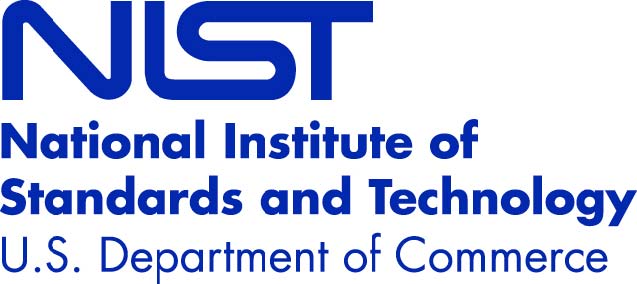
Exoskeletons and Exosuits Research and Standard Test Methods
Report points to ASTM Committee F48 Exoskeletons and Exosuits; ISO TC 299 Robotics; and IEEE Wearable Robots
Experiential Networked Intelligence (ENI);Evaluation of categories for AI application to Networks
The purpose of present document is to define quantitative evaluation criteria of network autonomicity categories, which are defined in the published ETSI GR ENI 007 [i.2]

Experimental Factor Ontology (EFO)
The Experimental Factor Ontology (EFO) provides a systematic description of many experimental variables available in EBI databases, and for projects such as the GWAS catalog.
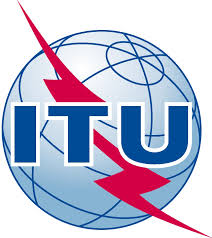
Extended producer responsibility - Guidelines for sustainable e-waste management”
This Recommendation offers a description of the extended producer responsibility (EPR) system in dealing with e-waste.

Extended Reality (XR) in 5G (3GPP TR 26.928 version 16.1.0 Release 16)
The present document collects information on eXtended Reality (XR) in the context of 5G radio and network services.
Extension to SAREF: Part 4: Smart Cities Domain:
Specify an initial extension to SAREF to include the semantic model for Smart Cities

Feature Annotation Location Description Ontology (FALDO)
FALDO is the Feature Annotation Location Description Ontology.

Feature Policy
This specification defines a mechanism that allows developers to selectively enable and disable use of various browser features and APIs.

Fetch Metadata Request Headers
This document defines a set of Fetch metadata request headers that aim to provide servers with enough information to make a priori decisions about whether or not to service a request based on the w

Fifth Generation Fixed Network (F5G); F5G High-Quality Service Experience Factors Release #1
The F5G Use Cases document ETSI GR F5G 002 has defined many use cases for F5G. To support these use&nb

Financial services
Standardization in the field of banking, securities and other financial services.

Financial Services Stakeholder Platform
The Financial Services Stakeholders Platform main objective is to identify and share the challenges, risks and best practices for the development, deployment and management of secure cloud services

Focus Group on "Artificial Intelligence for Health"
The ITU/WHO Focus Group on artificial intelligence for health (FG-AI4H) works in partnership with the World Health Organization (WHO) to establish a standardized assessment framework for the evalua

Focus Group on Application of Distributed Ledger Technology
Distributed ledger technology (DLT) refers the processes and related technologies that enable nodes in a network to securely propose, validate and record state changes (or updates) to a synchronise

Focus Group on Digital Currency including Digital Fiat Currency
The main objectives of the Focus Group are:

Focus Group on Environmental Efficiency for Artificial Intelligence and other Emerging Technologies
ITU-T Focus Group on "Environmental Efficiency for Artificial Intelligence and other Emerging Technologies" (FG-AI4EE) was established by ITU-T Study Group 5 at its meeting in Geneva on 22 May 2019

Focus Group on Machine Learning for Future Networks including 5G
The ITU-T Focus Group on Machine Learning for Future Networks including 5G was established by ITU-T Study Group 13 at its meeting in Geneva, 6-17 November 2017.

Focus Group on Technologies for Network 2030
The Focus Group, intends to study the capabilities of networks for the year 2030 and beyond, when it is expected to support novel forward-looking scenarios, such as holographic type communications,

Focus Group on Vehicular Multimedia
A Focus Group on Vehicular Multimedia (FG-VM) has been established to identify the need for new vehicular multimedia standards based on space and terrestrial networks integration.

Fog Computing Conceptual Model
The acute need of the multitude of smart, end-user IoT devices and near-user edge devices to carry out, with minimal latency, a substantial amount of data processing and to collaborate in a distrib

For Motion-Picture Equipment — Raw Stock Cores
This standard specifies the recommended sizes and dimensions of raw stock cores for 8-, 16-, 35-, 65-, and 70-mm motion-picture films.

For Motion-Picture Film (16-mm) — Camera Aperture Image and Usage
(1.1) This standard specifies the dimensions of the camera aperture image and its relative position to the reference edge and the perforati

For Motion-Picture Film (16-mm) — Picture and Sound Contact Printing — Printed Areas
This standard specifies the location and size of the printed picture and photographic sound track areas for both negative/positive and reversal contact printing operations.

For Motion-Picture Film (32-mm) — 35-mm Film Perforated 32-mm, 2R
This standard specifies the cutting and perforating dimensions for 35-mm motion-picture film having two rows of 16-mm type perforations, one row near each edge of the 35-mm film, and a perforation

For Motion-Picture Film (35-mm) — Camera Aperture Images and Usage
This standard specifies the dimensions of the camera aperture images and the relative positions of the vertical and horizontal centerlines of the intended image area with respect to the refer

For Motion-Picture Film Nomenclature for Studios and Processing Laboratories
A series of images presented in rapid succession with objects represented in successive positions either unchanged or changed and producing, because of the persistence of vision, the optical effect

For Motion-Picture Film — 35- and 16-mm Television Release Prints — Leaders and Cue Marks
This standard specifies the make-up or assembly of leaders and cue marks for 35- and 16-mm analog audio motion-picture release prints for use in television studios.

For Television Analog Recording — 1-in Type B Helical Scan — Basic System Parameters
This standard specifies the basic system parameters, i.e., the positions of recording head gaps, the scanning configuration, the axis of ro

For Television Analog Recording — 1-in Type B Helical Scan — Frequency Response and Operating Level
This standard specifies the frequency response and operating level of recorders and reproducers for audio records for 1-in type B helical-s

For Television Analog Recording — 1-in Type B Helical Scan — Records
This standard specifies the dimensions and location of the video, audio, and tracking-control records and the longitudinal separation of th

For Television Analog Recording — 1-in Type B Reference Recorders — Basic System and Transport Geometry
This standard specifies test conditions, general video record system, video pole-tip locations, scanner parameters, scanner-guide locations, and the tape tension for 1-in type B helical-scan video

For Television Analog Recording — 1-in Type B Reference Recorders — Records on Reference Tapes
This standard specifies the dimensions and location of video, audio, and tracking-control records on reference tapes for 1-in type B helical-scan video tape recorders, operating on the 525/60 monoc

For Television Analog Recording — 1-in Type C Recorders and Reproducers Longitudinal Audio Characteristics
This standard specifies the frequency response and reference level of recorders and reproducers for audio and longitudinal time and control code records for 1-in type C helical-scan television anal

For Television Analog Recording — 1-in Type C — Basic System and Transport Geometry Parameters
This standard specifies the general video record system, video pole tip locations, scanner parameters, scanner-guide locations, tape tension, and test conditions for 1-in type C helical-scan televi

For Television Analog Recording — 1-in Type C — Records
This standard specifies the dimensions and location of recorded video, audio, and tracking-control records for 1-in type C helical-scan television analog recorders operating in the 525/60 monochrom

For Television Analog Recording — 1/2–in Type G — Cassette and Tape
This standard specifies the dimensions of a video cassette and a video magnetic tape intended for use with 1/2-in type G video systems operating at tape speeds of 40, 20, and/or 13.3 mm/s (1.57, 0.

For Television Analog Recording — 2-in Magnetic Tape for Quadruplex Recording — Speed
This standard specifies the nominal rates of travel of 2-in wide magnetic tape for quadruplex video magnetic tape recording.

For Television Analog Recording — 2-in Reels
This standard specifies the dimensions of reels in maximum capacities of 750, 1650, 3600, 5540, and 7230 ft designed to accommod

For Television Analog Recording — Frequency Response and Operating Level of Recorders and Reproducers — Audio 1 Record on 2-in Tape Operating at 15 and 7.5 in/s
This standard specifies the frequency response and operating level for recorders and reproducers for audio 1 record for 2-in qua

For Television Analog Recording — ¾-in Type E — Small Video Cassette
This standard specifies the dimensions of a video cassette for use with a 3/4-in type E helical-scan video tape recording cassette system, operating at a tape speed of 95.3 mm/s (3.75 in/s).

For Television Recording — 1-in Reels
This standard specifies the configuration and dimensions for reels intended for 1-in magnetic tape for television recording on helical-scan video recorders, as specified in ANSI/SMPTE 25M.

For Television — Time and Control Code
This Standard specifies a time and control code for use in television and accompanying audio systems operating at nominal rates

For Television — Transmission of Time Code in the Ancillary Data Space
This standard defines a transmission format for conveyance of linear (LTC) or vertical interval (VITC) time code data formatted according t

For Video Recording — 1-in Helical-Scan Recorders — Raw Stock for Reference Tapes
This standard specifies dimensions for the width, thickness, and width deviation of raw tape stock used to record reference tapes for 1-in helical-scan video tape recorders.

For Video Recording — 1-in Magnetic Recording Tape
This standard specifies the dimensions of 1-in video magnetic recording tape, and the direction of magnetic orientation.
